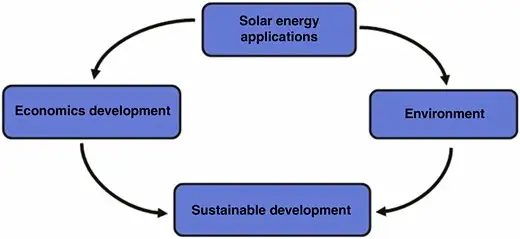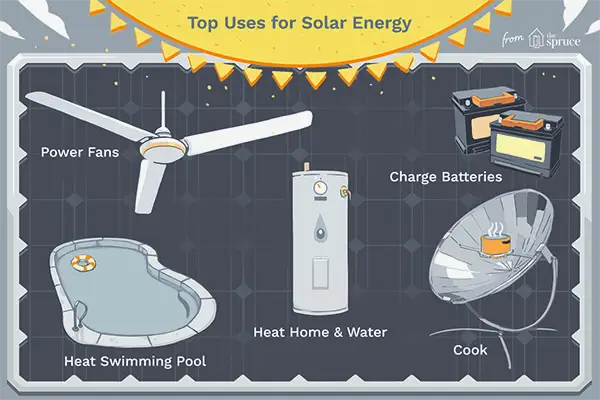Many different resources are in use to ensure comfortable living conditions. Electricity is one of them. That is why building a stable and functional power grid is one of the priority tasks for all humanity. At the same time, the main criterion is the correspondence of the generation volumes to the constantly growing demand. However, implementing this task is not easy. After all, most power plants still operate on fossil fuels, the processing of which affects the environment.
In addition, its volumes are depleted. The use of solar systems, structures that use an inexhaustible source, can save the situation.
Though the development of the industry continues, certain steps have already been taken for this purpose. According to EIA forecasts, by 2024 the capacity of solar energy in the US should increase to 6%. We offer to find out the advantages of using this source and why it can ensure the stability of the power system.

Fossil fuel and other sources are currently the main resources for providing power plants, the volumes of which are gradually decreasing. This is a serious problem because they are all exhaustive. To eliminate it and ensure the necessary level of nutrition for many years, scientists focused all their attention on the possibility of using alternative ecological resources. In particular, solar energy.
It is a unique source that contributes to reducing the impact on the environment and is also able to ensure sustainable development. That is why scientists are constantly conducting experiments with technologies that can effectively absorb solar radiation. Solutions that have already passed the test and are fully suitable for use in homes and commercial premises are offered by solar companies. These can be solar systems of different power and shape.
Each buyer can choose the best configuration for himself, taking into account several criteria. Among them is the volume of electricity consumption, climate, weather conditions, and location. Currently, the variety of solar systems is very large. They can even supply smart home systems. Any of the solutions used is a step towards the formation of a sustainable and ecological electricity supply.
These features can become a complete answer to the question: “What is solar energy used for?”. This resource is not exhaustive. That is why the use of technology that converts radiation into current can be an effective solution to the issue of resource depletion. In addition, the problem of uninterrupted power supply is also solved, so the risks of emergencies and failures will be significantly reduced.

Modern companies are constantly improving designs that convert radiation into electricity. Currently, dozens of solutions for various requests are available to buyers.
All of them differ in design, dimensions, and features of functioning. However, the basis of any installation uses a single technology. It involves the conversion of solar radiation into an electric current of a certain strength. It all depends on the material and characteristics of the solar systems.
Most designs offered by manufacturers consist of several parts:
These kits may include batteries where energy can be stored. Here, each of the installations works as per the standard schemes. During the initial stage, sunlight encounters the solar panels. It has a semi-conductor which is of silicon, out of which the base is made up. Their electrons are ejected from the solar radiation at times when it hits the surface of the semiconductor.
It leads to the movement of particles and creates a constant flow of electric current. However, in that situation, it is not possible to deploy that for use by the ultimate consumers, because of this the system is integrated with an inverter. This inverter is able to convert the direct current into alternating current i.e. DC to AC. In this form, it is capable to supply power to all of the electronic items present in the room.
An important reason for using solar energy-based systems is due to the sustainability of solar energy. It is important to look into comparing with conventional electricity generators to understand this aspect. As we know that power plants already utilize so much of the fossil fuels and water resources which are exhaustive. It means that these are the exhaustive sources.
If they are used more actively they are more likely to get decreased from their reserve. Electricity supply will also be affected in these scenarios in the future. Also, as the demands are constantly increasing the resources are constantly decreasing because they are reserved. In such conditions, for the sustainable development of the industries solar panel sustainability can be a driving factor to take decisive action. Still, the advantages of solar energy-based systems are not limited to this.
We all know that traditional energy sources have their own drawbacks. One of the major negative impacts is that it imposes harmful impacts on the environment. Harmful emissions occur when the operations happen at power plants.
This directly contributes to global warming and pollution. With the deployment of solar energy, it will help in help at reducing such harm and improving environmental conditions. These are renewable and don’t emit harmful substances during the process of energy.
It clearly signifies that the natural resources will not deplete if it is brought into use. Considering these factors the solar capacity will increase and will improve the ecological situation further also would resolve the issues of rising electricity demand.
When there is a plan for the creation of newer powerplants it actively requires indulging in tasks that can trigger geological changes and also destroy the ecosystems. For example, in so many cases, the construction of the object involves drilling to a certain depth or cutting down trees, or destroying plants too. In this process, the habitats of so many animals also get destroyed.
As a result, entire ecosystems are destroyed and nature is harmed. Installing solar panels has no such consequences. They can be mounted on roofs or in small areas near objects. For this, you only need to install certain fasteners. Drilling and felling of trees is not carried out in this case. In addition, the researchers proposed improved solutions that contribute to more efficient use of the territory with the benefit of nature.
For example, those who wish can install floating power plants. They contribute to maintaining the optimal water temperature preventing strong heating and also free up areas for other purposes. In addition, solar panels are actively used in agriculture. They are placed over certain plants to protect them from excessive sunlight.
If you still doubt whether solar energy is sustainable, then you should familiarize yourself with the features of the functioning of modern systems. Constructions are presented in a large assortment. They have different power and capabilities. This allows the solar panels to be used in two ways: as backup power and main power.
In the first case, the object is connected to the general network, but at the same time has installations for the generation of solar electricity. In this case, the latter is used for additional power. They protect against emergency power outages and system failures. In addition, solar panels can be the main source of power. In this case, autonomous systems without connection to the general network are used.
Summarizing the features of using solar installations and their advantages, it is possible to point out the prospects of solar energy. This industry has many advantages and wide development opportunities. The most important aspects are the sustainability and environmental friendliness of solar energy. Thanks to this, it can help in the process of building a reliable and safe energy system in the future.
